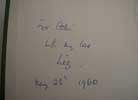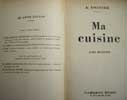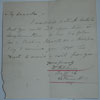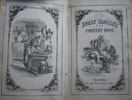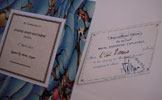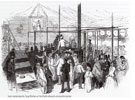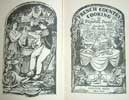Les Fleurs en Cire
A. ESCOFFIER LES FLEURS EN CIRE (An elaborate printers floral device) BIBLIOTHEQUE DE L'ART CULINAIRE 4 Place Saint-Michel, - PARIS MDCCCCX Nouvelle Edition
Fourth Edition, Paris, 1910. 188x141mm. 1fep. Half-Title. On verso Headpiece & printer's details for all editions. [1] Frontispiece. Title page on thick photographer's card and tissue guard. [1] (1)10-92. 3p Index. [1] 1fep. Original publisher's printed cover, in good condition. Internally very clean. Illustrations: Halftone frontispiece portrait of Escoffier and halftone illustrations titled "Fleurs de Magnolia en Cire" and 40 photo engraved illustrations in the text. A very nice untrimmed copy with many uncut pages. A very scarce and sought after book.
- This slim volume was originally published under the title 'Traite sur l'Art de Travailler les Fleurs en Cire' Paris, 1884. During this period Escoffier married Delphine Daffis, the daughter of a publisher. Writing poetry herself, she contributed to this publication. Escoffier was a major writer of culinary classics and is still consulted as an authority. Besides 'Les Fleurs en Cire', his other best known writings are --- 1903 - 'Le Guide Culinaire'; 1907 - 'A Guide to Modern Cookery', 1st english edition; 1910 - 'Les Fleurs en Cire', a new edition; 1911 - 'Le Carnet d'Epicure'; 1912 - 'Le Livre des Menus'; 1919 - 'L'Aide-Memoire Culiniare'; 1927 - 'Le Riz'; 1929 - 'La Morue'; 1934 - Ma Cuisine. This is a collectors item. Editions of this early work by Escoffier are very scarce and much sought after, especially in this fine original condition. With the bookplate of Tore Wretman.



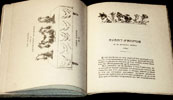

click on image to enlarge

Modern category
ref number:
11114 
